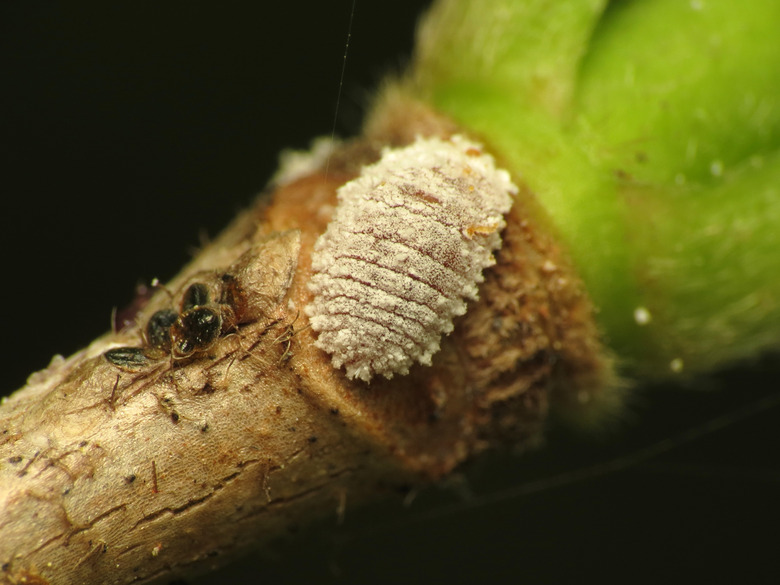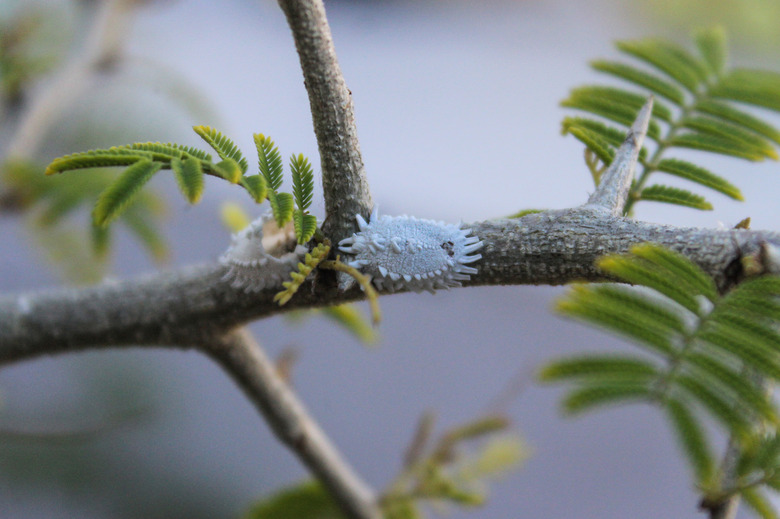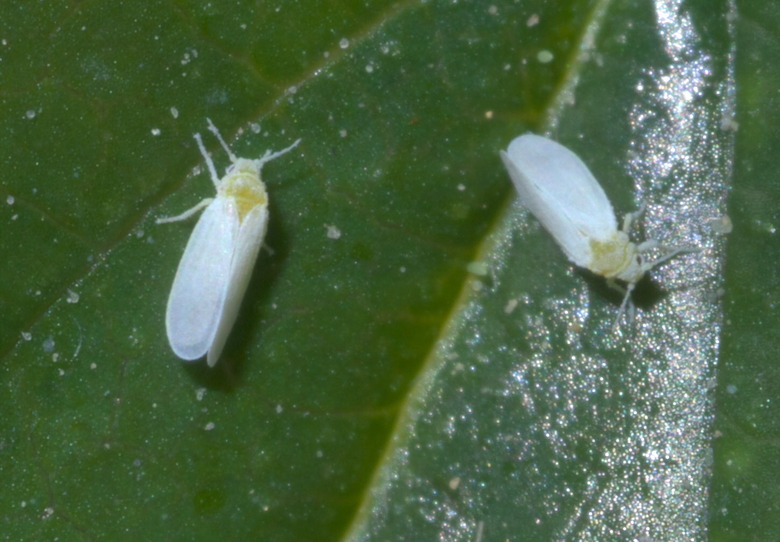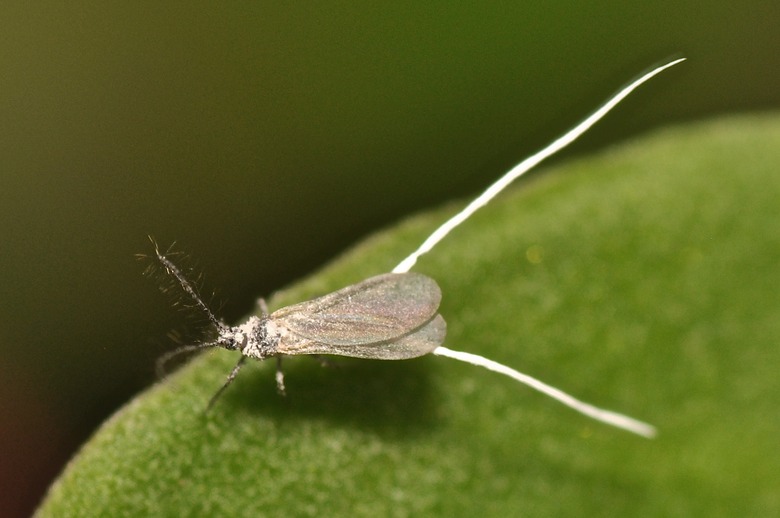How Do I Get Rid Of White Bugs On My Outdoor Plants?
In a healthy ecosystem, there are diverse populations of plants and other living organisms. Much to a gardener's chagrin, this diversity includes garden pests that run the gamut from those that cause negligible damage to others that result in heavy infestations.
If undeterred by the overuse of pesticides, natural predators such as beneficial insects often are sufficient to keep pest populations in check. However, when this natural form of pest control fails to provide an acceptable threshold of protection for your outdoor plants, knowing how to identify and manage little white bugs, white insects and other undesirable pests can keep your prized ornamental plants in tiptop shape.
Mealybugs
Before they take on their characteristic adult form, immature mealybugs don't resemble their mature counterparts.
Mealybugs progress through several stages of molting, or shedding their exoskeletons, each stage of which produces an immature nymph or instar. Although the immature nymphs, also called crawlers, may be yellow, orange, or pink, the adult mealybugs are white. You may see several stages at the same time on your plants.
Because adult mealybugs have a white, cottony appearance and a habit of clustering together in colonies, they're easy to spot on plants. You'll likely see them clustered around stem crotches, where they pierce tender stems and feed on plant sap. Small populations don't cause much damage, but severe mealybug infestations can weaken plants and hinder plant growth.
There are many species of mealybugs, but they're all controlled using the same management options. **A non-chemical method involves using your garden hose's water wand or a handheld spray bottle jets water onto plants and dislodges mealybugs.** You can also use a cotton swab saturated with rubbing alcohol to dab away mealybugs.
Also, avoid overfertilizing plants with a high-nitrogen fertilizer, which promotes lots of succulent new growth that mealybugs crave.
Warning
When using insecticidal soap on your plants, follow the product's instructions and test it on a small section before applying it to all the affected plants.
Use insecticidal soap to combat a severe mealybug infestation. Only apply this product according to the label directions, and test a small section on an affected plant first to make sure the soap doesn't cause damage. Even though insecticidal soaps are considered organic pesticides, many types of plants may be damaged by their application.
Whiteflies
Although they're not true flies, whiteflies are so-named because the winged adults take flight in a flurry of white when disturbed. These pests are closely related to other white bugs on outdoor plants, including mealybugs and scale insects.
Similar to mealybugs, whiteflies progress through a series of non-winged nymphal stages called instars before maturing to winged adult whiteflies. The nymphs, also called crawlers, are so small that you probably won't see them.
Whiteflies can cause a secondary problem by excreting a sugary, sticky substance called honeydew on plant leaves and stems. If you see ants swarming on your plants, look a little closer. Ants love to feed on honeydew, but they also keep away some natural predators of whiteflies.
A fungus called black sooty mold grows on the honeydew, preventing photosynthesis. In light populations, whiteflies cause little damage to plants, but whitefly infestations can weaken plants as the insects siphon the cell sap.
The trick for how to get rid of whiteflies often involves a multi-pronged approach. **Follow the recommendations for controlling mealybugs, adding the use of reflective mulches and/or yellow sticky traps if you're dealing with a whitefly infestation.**
Scale Insects
Adult scale insects are usually brown, gray or white. They may also be "soft scale" or "armored scale" insects, both types having a waxy covering over their bodies, but with armored scales having a more defined "coat of armor" over them.
You may not even recognize these pests as insects, mistaking them instead for abnormal growths on plant stems, but the insects hidden underneath their protective armor are busy feeding on your plants, piercing tender plant tissue and siphoning cell sap with their straw-like mouthparts.
Because of their protective coverings, scale insects are more difficult to control than many other pests. Unless you have a severe infestation, **the easiest control method may be using your fingernail or a plastic card to flick the scale insects off your plants.**
Contact insecticides offer little control because they can't penetrate the protective armor. Horticultural oil, such as neem oil spray, can be effective, because it smothers scale insects. You have to apply the oil to all plant surfaces, however, even the underside of leaves, and this product is not safe to use on all plants.
Avoiding the use of chemical pesticides helps foster a healthy ecosystem that supports populations of natural predators for all the above pests. Lacewings, ladybugs, lady beetle larvae, certain beetles and parasitic wasps help keep these pests under control.
Inspect new plants before introducing them into your landscape to make sure they're free of pests and not acting as host plants for new insect invaders.



